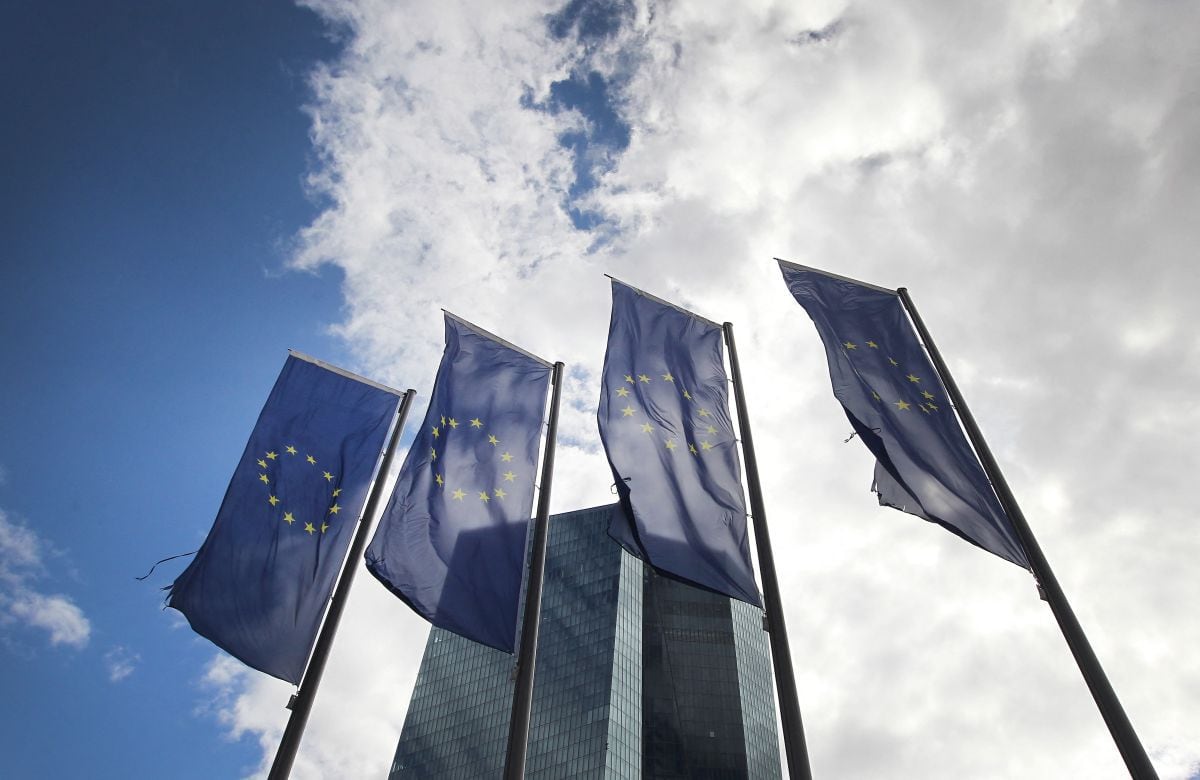
The supply of euro area government bonds will reach a record high when the European Central Bank (ECB) reduce its debt portfolio, a reduction that will be 15,000 million euros per month on average as of March, by ceasing to reinvest maturing bonds.
The ECB will announce details of the quantitative reduction of the debt purchase program after the meeting on February 2, which began in October 2014, at a time when it is also determined to further raise its interest rates.
Debt purchases help lower long-term interest rates and now the ECB’s gradual exit from the market will also push yields higher in a highly volatile environment.
READ ALSO: Argentine startup will promote payments for services with cryptocurrencies in Peru
UniCredit analysts consider in a report published this Thursday that the reduction will be applied proportionally in several classes of fixed income assets and that the monthly amount will increase to between 15,000 and 25,000 million euros after June.
In 2023, public and private bonds of that program worth some 331.6 billion euros mature, of which 256 billion euros are public bonds according to ECB figures.
As of March, bonds worth 280,000 million euros mature this year.
Specifically, the ECB will put on the market government bonds worth between 100,000 and 150,000 million euros this year, which will increase the net supply in the market to a record high, according to UniCredit figures.
The ECB sales come at a time when the supply of government bonds is already very high because it has risen so much since 2020 when euro area governments issued a lot of debt to deal with the economic fallout from the pandemic.
The net supply of government bonds, which are debt issues minus maturing debt, reached 1 trillion euros in 2020, 600 billion euros in 2021, 400 billion euros in 2022 and just under 600 billion euros. in 2023.
In 2010 it had exceeded 600,000 million euros and in 2019 it dropped to 100,000 million euros.
The supply of government bonds to the market is now at maximum levels similar to those of 2010 before the sovereign debt crisis broke out.
LOOK HERE: ECB’s Kazimir: “We need two more increases of 50 basis points”
Since the ECB began buying bonds in 2014, the net supply of governments in the market began to fall, reaching a minimum in 2019 of 100 billion euros.
But despite the drop in issuance, between 2015 and 2017 the ECB bought large amounts of existing government debt from private investors.
In 2020 and 2021, the ECB also acquired large amounts of government bonds, but the supply had risen a lot due to the pandemic.
The ECB and the national central banks purchased from October 2014 to July 2022 public debt, bonds issued by supranational European institutions, corporate bonds, asset-backed bonds and covered bonds.
The ECB acquired with this debt purchase program public and private bonds worth 3.253 trillion euros, mainly public debt worth 2.584 trillion euros.
Bonds of this program worth 42.019 million euros mature in March of this year, including public bonds worth 31.494 million euros.
READ ALSO: European Central Bank raises rates, but at a slower pace
When the ECB bought these bonds, the increased demand for these assets caused their prices to rise and their yields to fall.
This encouraged banks to make more loans, which they can use to create or sell more asset-backed bonds or covered bonds.
The increase in the supply of loans reduces the interest rates that banks apply to businesses and households.
The ECB has bought public and private sector bonds from investors such as pension funds, banks and households.
By lowering financing costs for businesses and households, debt purchases can stimulate investment and consumption.
Source: EFE
Source: Gestion
Ricardo is a renowned author and journalist, known for his exceptional writing on top-news stories. He currently works as a writer at the 247 News Agency, where he is known for his ability to deliver breaking news and insightful analysis on the most pressing issues of the day.












